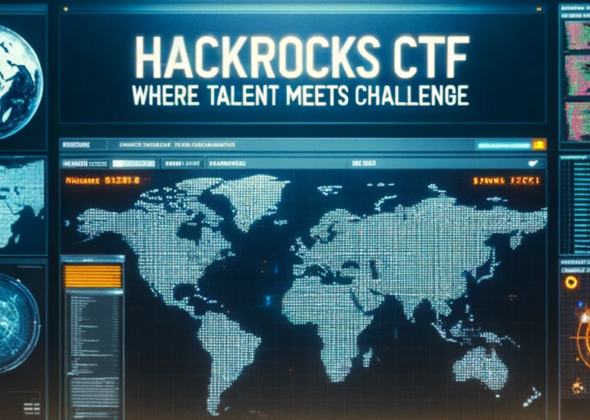Table of Contents
Creating your own Capture The Flag (CTF) competition isn’t just about creating challenges—it’s about engagement, fairness, and real-world cybersecurity training. Whether you’re hosting a corporate cybersecurity challenge, a university event, or a global hacking tournament, here are some Tips and Tactics for Creating your own Capture The Flag Competition.
Define Your CTF’s Purpose & Audience
- Beginner-Level (Educational CTFs) – Ideal for universities & training programs, focusing on fundamental security concepts.
- Intermediate-Level (Corporate CTFs) – Used by companies to train security teams with real-world scenarios.
- Advanced-Level (Elite CTFs) – Attack-Defense formats for experienced hackers & security pros.
Pro Tip: Your audience decides the difficulty, challenge type, and format.
Pick the Right CTF Format
CTF Jeopardy-Style
Solving standalone challenges in web security, cryptography, forensics, reverse engineering, network security, web hacking, exploiting, OSINT, among others.
CTF AttackVS Defense
Teams attack and defend systems in real-time in the same virtual environment, it requires deeper technical skills, and the virtual environment is more complex.
Build High-Quality CTF Challenges
Quality VS Quantity
In any Capture The Flag (CTF) competition, the quality of your challenges will find-out whether players feel engaged, frustrated, or bored. A good challenge is clear, logical, and relevant—something that teaches while it tests. If you're serious about creating your own Capture The Flag competition, mastering challenge design is non-negotiable.
Balance Difficulty
Have a mix of easy, medium, and hard challenges.
Use Real-World Scenarios
Challenges should mimic real cyberattacks like weak encryption, misconfigurations, or hidden admin panels.
Avoid Poor Challenge Design:
❌ Too vague? → Provide some hints.
❌ Too easy? → Ensure players must think, not just Google answers.
❌ Unintended solutions? → Test thoroughly before launch!
Pro Tip: A great CTF challenge teaches skills, not just tests knowledge.
Secure Your CTF & Prevent Cheating
Cheating Prevention:
•Use dynamic flags to prevent sharing.
• Monitor for brute-force attacks & automation scripts.
Challenge Isolation:
• Run challenges in Docker containers or VMs to prevent unintended access.
Clear Scoring & Rules:
• Set penalties for rule violations and provide a clear dispute resolution process.
Pro Tip: Even in ethical hacking competitions, people will try to cheat. Be ready.
Summary of High
✅ Define your audience & event goals before anything else.
✅ Choose the right format & platform based on your resources.
✅ Design challenges that are engaging, realistic, and fair.
✅ Secure your infrastructure & prevent cheating for a smooth competition.
Next, we’ll explore how to design CTF challenges that test real-world cybersecurity skills.
What Makes a Good CTF Challenge
In any Capture The Flag (CTF) competition, the quality of your challenges will find-out whether players feel engaged, frustrated, or bored. A good challenge is clear, logical, and relevant—something that teaches while it tests. If you're serious about creating your own Capture The Flag competition, mastering challenge design is non-negotiable.
Clear Objective
• The challenge should guide players without giving away the answer.
Example:
❌ Bad: “Find the flag.” (No direction.)
✅ Good: “The admin left an old login page. Can you bypass authentication?” (Gives a clue, not a solution.)
Logical Progression
• Players should solve challenges by thinking, not guessing.
• The best challenges follow a step-by-step path using common techniques or creative logic.
Real-World Relevance
• Challenges should teach skills that apply outside of CTFs—like decrypting weak encryption, analyzing malware, or exploiting a web flaw.
• Example: A forensic log analysis that mimics an actual incident response.
Balanced Difficulty
• Beginner: SQL injection, simple ciphers, steganography.
• Intermediate: Authentication bypass, binary analysis.
• Advanced: Web Hacking, Exploiting, zero-days, advanced cryptanalysis.
Pro Tip: Good CTFs gradually increase difficulty, so players build confidence before facing harder challenges.
Story-telling creates engagement
• The storytelling where you feel you are part of the story or the mission creates more engagement with the participants. Make the participants aware that their mission to solve the challenges is critical for the company or the story. Create new ethical hacker heroes.
Common Mistakes in CTF Challenge Design
Too Vague
• No clear direction frustrates players.
✅ Fix: Add A hint or clear context.
Too Easy
• If it can be Googled in seconds, it's useless.
✅ Fix: Even basic tasks should require real thought.
Too Hard
• Unsolvable = pointless.
✅ Fix: Beta-test with real players before release.
Unintended Solutions
• Guessing flags, misconfig exploits, brute-forcing—these can break the game.
✅ Fix: Test from multiple angles to patch shortcuts.
Pro Tip: Have testers with different skill levels try your challenge to catch blind spots.
Example of a Well-Balanced CTF Challenge
1. Cryptography
- Classic Ciphers (Beginner): A message encrypted using a Caesar or Vigenère cipher.
2. Steganography
- Hidden Data in Images (Beginner): A steganography challenge where a flag is hidden in image metadata.
3. Web Exploitation
- Cross-Site Scripting (Intermediate): A comment section that doesn’t properly escape user input, allowing stored XSS.
4. Forensics
- Packet Capture Analysis (Intermediate): A PCAP file containing credentials leaked via unencrypted HTTP traffic.
5. Binary Exploitation
- Heap Exploitation (Advanced): A challenge with a use-after-free or heap overflow that requires precise exploitation.
Conclusion about Tips and Tactics for Creating Your Own Capture The Flag: Elevate Your CTF to the Next Level
Capture The Flag (CTF) competitions aren’t just hacking games—they are hands-on cybersecurity battlegrounds that develop real-world security skills. Whether you're an organizer or a player, mastering CTFs can set you apart in the cybersecurity field. This is the summary of Tips and Tactics for creating your own Capture The Flag:
- Creating your own CTF requires careful planning—from defining the format to designing high-quality challenges.
- A well-balanced CTF tests real-world skills—including web security, cryptography, reverse engineering, and forensics.
- CTFs aren’t just competitions; they are learning platforms, building skills that translate directly into cybersecurity careers.
If you find our post about Tips and Tactics for creating your own Capture The Flag useful, you may also be interested in: CTFs Cybersecurity Competitions. What you should know about.
Are you interested in hosting your own CTF competition?
Contact us at the following link if you want to Host your own CTF Competitions with hackrocks:
Whether you're a seasoned expert or just starting your journey in cybersecurity, CTFs offer an exciting way to develop your skills, test your knowledge, and gain valuable experience.
Interested in starting training? Find in the following link the hackrocks challenges




